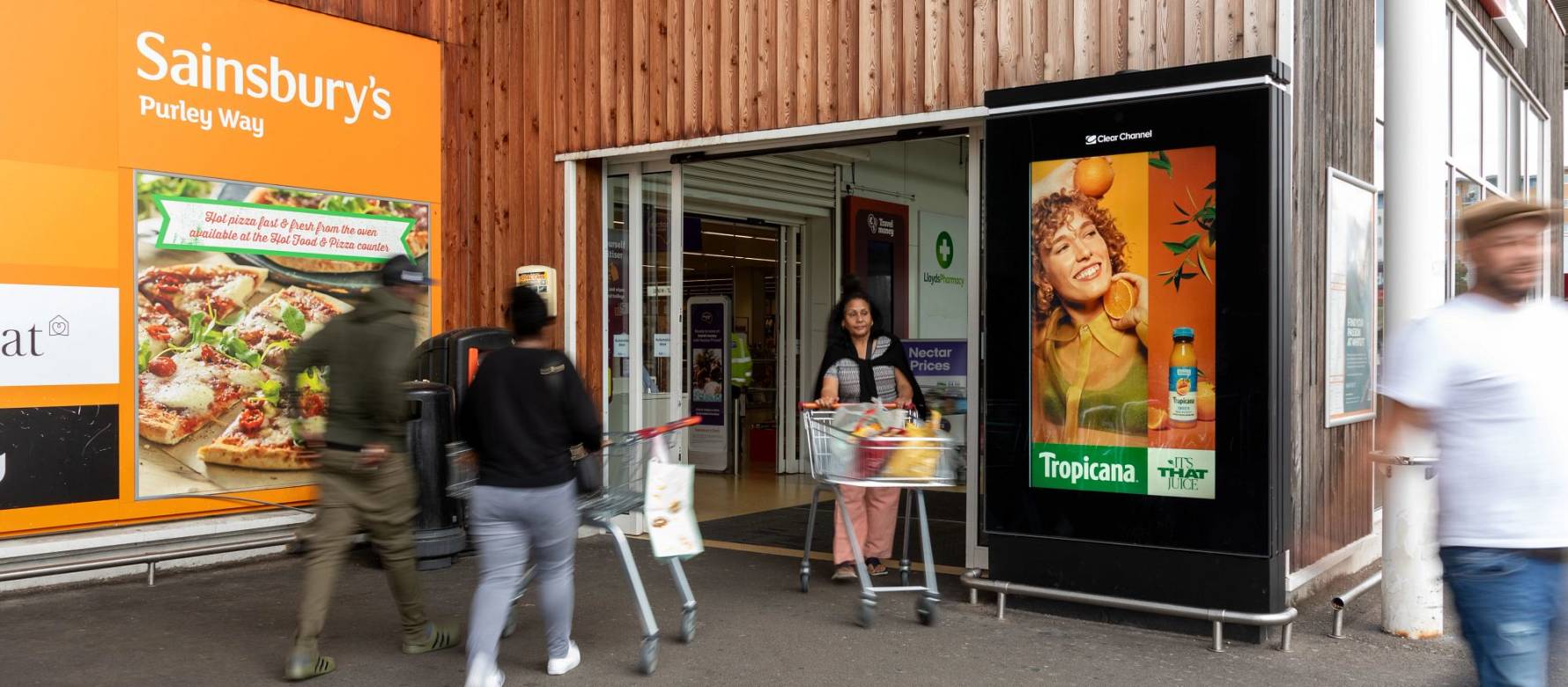Consumer shopping behaviour in the UK and how to influence it
04 Mar 2024 / News
The cost of living crisis has pressured UK residents for the past three years. And the consequences of this difficult time are presenting themselves in many different ways. People are tightening their belts in all areas of life, from leaving the lights off to using reselling platforms - and the same constraints can be seen in our shopping behaviours. Are there any advertising methods still getting through to shoppers when there are bigger concerns at hand?
In this report, we’ve dug into our data and looked into the ways that the cost of living crisis has affected UK consumer buying behaviour. Here, we can shed some light on the UK’s shopping habits and how they shift during difficult times.
The top ways the cost of living crisis has changed consumer behaviour
The majority of shoppers (75%*) are saying that they have had to change their grocery shopping behaviour due to the cost of living crisis. Perhaps, unsurprisingly, the most popular way in which this is happening is by people letting go of the things they feel they can live without.
Since the start of the cost of living crisis (2021), nearly half of shoppers (45%) are having to cut down on occasional treats, with people having to reassess the items they consider to be luxuries that they can no longer afford. 38% of people are doing their best to avoid impulse purchases - and at a time when even the cost of essentials seems to be rising every day, it’s understandable for people to think twice before parting with their cash.
Only 13% of people claim that their buying behaviours haven’t changed at all since the start of the cost of living crisis. With the cost of consumer goods and services having risen at the fastest rate in four decades, it’s still safe to assume that these unmoved people are now spending more money than they would have been a few years ago. However, are the people claiming to be going out of their way to save still finding themselves swayed by the appeal of Out of Home advertising? Some certainly are, as the majority of the UK’s supermarket spend (88%**) is still carried out in physical stores.

Shopping preferences in the UK
Only 8% of shoppers are choosing to shop exclusively online and make all of their purchases from the comfort of their own homes. This means that 96% of shoppers are regularly spending at least some of their shopping time in stores - and being exposed to supermarket advertising. This tells us that in-store advertising methods still have the chance to have a serious impact on shopper behaviour, despite the nation’s financial situation.

Some age groups are more likely to shop in-store than others, but only by a small margin. In general, among participants of all ages, more than half say that they shop in-store, and the ones most likely to head to the shops are the youngest and oldest in the survey. 16-24-year-olds and those aged 45 and up are not only far more likely to shop in person than online, but they’re also more interested in in-store shopping than their 25-44-year-old counterparts.

When faced with an overwhelming amount of options, as can sometimes be the case in larger supermarkets, shoppers’ brains look for ways to take mental shortcuts towards what is safe and familiar. This is great news for popular brands that already have big followings - but brands looking to gain new customers through in-store advertising can also attract attention. 30% of consumers say that they opt to shop in-store specifically because they’re more likely to find new products that way. An even higher 43% of shoppers say they shop in-store because they believe they’re more likely to find deals that way - proving that there are things that can lure even the most loyal brand fans out of their comfort zones.

In terms of specific product selection, 65% of shoppers say that they will pick a product simply because it is on offer, with the appeal of a deal outweighing both the pull of the familiar and the need to be frugal.

Advertising contributing to purchase decisions
When it comes to supermarket advertising, Point of Sale (POS) advertising can influence buying decisions in more places than just the checkout - it can bring attention to products on the shelves. When tested, a brand that had POS advertising saw 53% more attention than the control product, was located faster by shoppers, and ultimately saw more purchases***.
Impulse buying trends in the UK
An impulse purchase is a decision made in the spur of the moment, often with the goal of instant gratification. While advertising might lead to purchases that could be considered impulsive, it’s possible that shoppers themselves don’t see it that way - especially if they believe they’re getting a good deal. So what do confessed impulse buyers have to say about their shopping habits?
Just under a third of us (32%) make impulse purchases at least a few times a month, and far from being a bad habit, most impulse buys are still looked at fondly even after some time has passed. At a time when the cost of living crisis is causing distress in nearly a third of UK residents, small pleasures can hardly be considered a bad thing. Even so, 12% of shoppers claim to be experts in self-restraint, and either don’t feel or successfully resist the pull of impulse purchases.

Cities where people are more likely to make impulse purchases
The residents of some cities are more prone to impulse spending than others. What can we deduce from this information? Is it a coincidence that so many of the cities most likely to house impulse buyers are: on the coast; expensive to live in; and places where happiness and quality of life are reported to be higher? Realistically, many areas that grace the list of top impulsive spenders are areas in which people are more likely to have money to spend.

Top impulse purchase categories in the UK
And what exactly are impulse buyers spending their money on? Food is the most popular impulse purchase, with 55% of shoppers being willing to fork out for a tasty treat. This might well be down to the added sensory allure of food, where seeing something appetising will cause a bodily response - especially if you’ve gone shopping on an empty stomach. It’s been proven that shopping while hungry is enough to make shoppers deviate from pre-written grocery lists in search of something to instantly sate their cravings. In the same vein, other edibles, such as drinks and takeaways, also rank highly, whereas tech and miscellaneous products have the least appeal.

Men and women are almost equally inclined to impulse buy food, and clothes also feature highly in both rankings - though women are 12% more likely to flesh out their wardrobes with impulse buying. There could be many outside factors influencing these differences - for example, social expectations and peer pressure could potentially factor into why one in three men are likely to impulse buy drinks, compared to only one in five women. Men are also more likely to spend on impulsive takeaways, perhaps being more willing to part with their money to satisfy cravings of hunger or thirst. Instead, women are more likely to spend on beauty products and household items, potentially looking for longer-lasting satisfaction from their impulse buys.

When asked about the reasons behind their impulse purchases, shoppers are once again saying that they’re swayed by promotions and discounts more than anything else (50%) - even instant gratification or hunger. This feeling of wanting to leap on a limited-time deal is a recurring theme throughout the survey - and something that advertisers are familiar with leveraging.

What can you do to influence UK shoppers?
While only 19% of shoppers claim that in-store advertising influences their impulse purchases, chances are that many shoppers are unaware that they’re subconsciously consuming advertisements everywhere they go. After all, 96% of shoppers are regularly spending at least a little bit of time in stores - meaning nearly everyone has the potential to come into contact with in-store advertising or POS screens inside shopping malls and directly outside of supermarkets.
POS (Point-of-Sale) screens and in-store advertising has the potential to greatly improve shopping experiences. Through supermarket and shopping centre advertising, customers can not only discover new products, but have their regular purchases reaffirmed to them in a way that increases confidence in brands. This is partly due to the fact that in-store advertising deploys multiple touchpoints to help improve brand recall As a result of this, retailers are rewarded with increased sales and customer loyalty.
Out of Home advertising (also known as OOH marketing) can make its mark before, during, and after an in-store shopping experience. Whether in the form of digital advertising screens or POS displays, this style of advertising might be convincing shoppers to part with their money in a way that doesn’t even feel like an impulse purchase - especially if it involves a discount or deal.
Even despite the cost of living crisis, UK shoppers are still unwilling to part with the promise of a dopamine-inducing treat, or taking advantage of a great deal before it passes them by. With these habits in mind, it’s easy to see how the right OOH marketing can turn heads both on the street and in-store and result in more sales.
Get in touch
To see how we can make shoppers more familiar with your brand, to discuss campaign options, or for further details on this report, please fill in our form below and one of our team will be in touch. For insights on how you can influence your shoppers, check out more of our research.
Sources: Consumer shopping behaviour in the UK study, 2024 *Mintel Supermarkets, 2022 ** GlobalData *** ShopperCentric Supermarket, 2023
SHARE POST
PRESS ENQUIRIES



